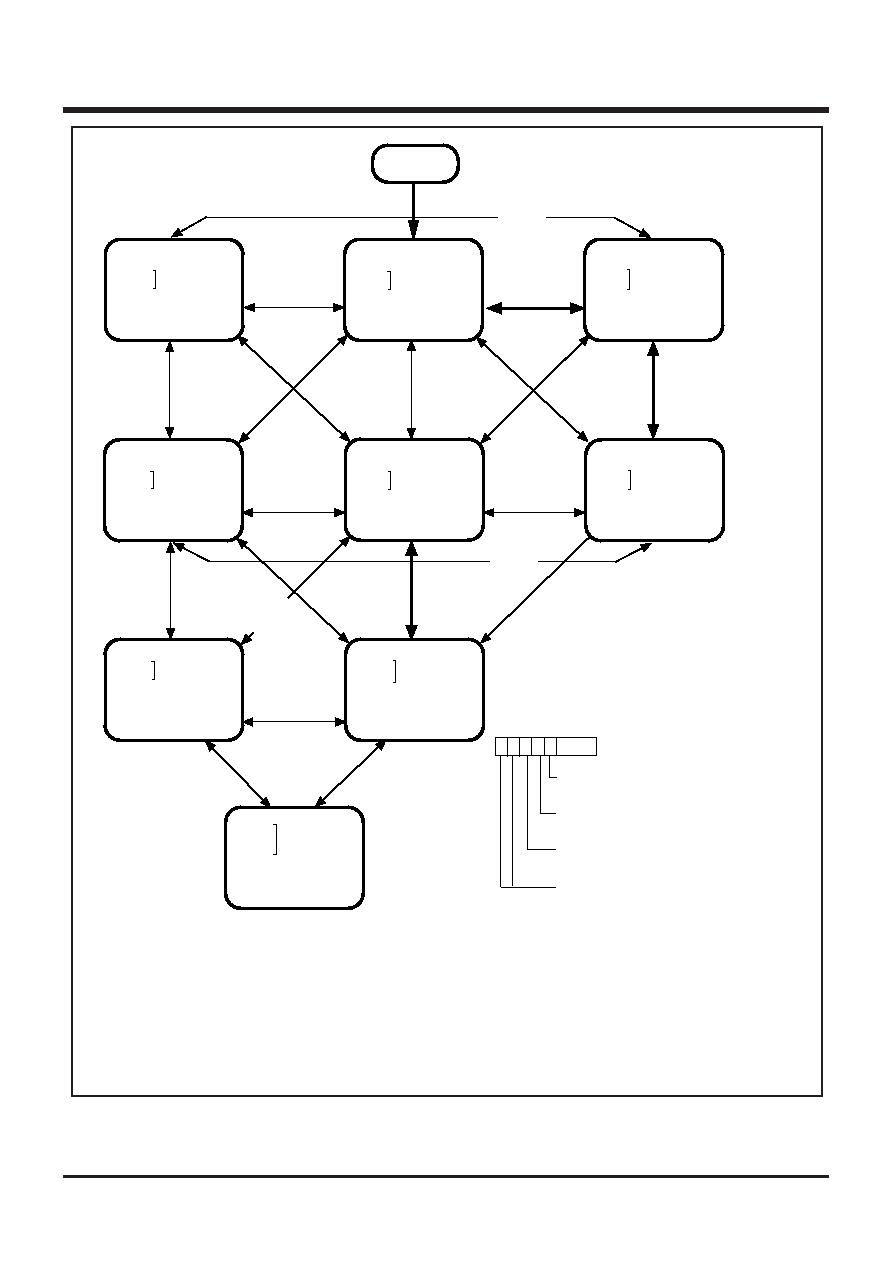- 您現(xiàn)在的位置:買賣IC網(wǎng) > PDF目錄45047 > M38747M6T 8-BIT, MROM, 6.4 MHz, MICROCONTROLLER, PQFP80 PDF資料下載
參數(shù)資料
| 型號(hào): | M38747M6T |
| 元件分類: | 微控制器/微處理器 |
| 英文描述: | 8-BIT, MROM, 6.4 MHz, MICROCONTROLLER, PQFP80 |
| 封裝: | 14 X 14 MM, PLASTIC, QFP-80 |
| 文件頁數(shù): | 341/358頁 |
| 文件大小: | 4216K |
| 代理商: | M38747M6T |
第1頁第2頁第3頁第4頁第5頁第6頁第7頁第8頁第9頁第10頁第11頁第12頁第13頁第14頁第15頁第16頁第17頁第18頁第19頁第20頁第21頁第22頁第23頁第24頁第25頁第26頁第27頁第28頁第29頁第30頁第31頁第32頁第33頁第34頁第35頁第36頁第37頁第38頁第39頁第40頁第41頁第42頁第43頁第44頁第45頁第46頁第47頁第48頁第49頁第50頁第51頁第52頁第53頁第54頁第55頁第56頁第57頁第58頁第59頁第60頁第61頁第62頁第63頁第64頁第65頁第66頁第67頁第68頁第69頁第70頁第71頁第72頁第73頁第74頁第75頁第76頁第77頁第78頁第79頁第80頁第81頁第82頁第83頁第84頁第85頁第86頁第87頁第88頁第89頁第90頁第91頁第92頁第93頁第94頁第95頁第96頁第97頁第98頁第99頁第100頁第101頁第102頁第103頁第104頁第105頁第106頁第107頁第108頁第109頁第110頁第111頁第112頁第113頁第114頁第115頁第116頁第117頁第118頁第119頁第120頁第121頁第122頁第123頁第124頁第125頁第126頁第127頁第128頁第129頁第130頁第131頁第132頁第133頁第134頁第135頁第136頁第137頁第138頁第139頁第140頁第141頁第142頁第143頁第144頁第145頁第146頁第147頁第148頁第149頁第150頁第151頁第152頁第153頁第154頁第155頁第156頁第157頁第158頁第159頁第160頁第161頁第162頁第163頁第164頁第165頁第166頁第167頁第168頁第169頁第170頁第171頁第172頁第173頁第174頁第175頁第176頁第177頁第178頁第179頁第180頁第181頁第182頁第183頁第184頁第185頁第186頁第187頁第188頁第189頁第190頁第191頁第192頁第193頁第194頁第195頁第196頁第197頁第198頁第199頁第200頁第201頁第202頁第203頁第204頁第205頁第206頁第207頁第208頁第209頁第210頁第211頁第212頁第213頁第214頁第215頁第216頁第217頁第218頁第219頁第220頁第221頁第222頁第223頁第224頁第225頁第226頁第227頁第228頁第229頁第230頁第231頁第232頁第233頁第234頁第235頁第236頁第237頁第238頁第239頁第240頁第241頁第242頁第243頁第244頁第245頁第246頁第247頁第248頁第249頁第250頁第251頁第252頁第253頁第254頁第255頁第256頁第257頁第258頁第259頁第260頁第261頁第262頁第263頁第264頁第265頁第266頁第267頁第268頁第269頁第270頁第271頁第272頁第273頁第274頁第275頁第276頁第277頁第278頁第279頁第280頁第281頁第282頁第283頁第284頁第285頁第286頁第287頁第288頁第289頁第290頁第291頁第292頁第293頁第294頁第295頁第296頁第297頁第298頁第299頁第300頁第301頁第302頁第303頁第304頁第305頁第306頁第307頁第308頁第309頁第310頁第311頁第312頁第313頁第314頁第315頁第316頁第317頁第318頁第319頁第320頁第321頁第322頁第323頁第324頁第325頁第326頁第327頁第328頁第329頁第330頁第331頁第332頁第333頁第334頁第335頁第336頁第337頁第338頁第339頁第340頁當(dāng)前第341頁第342頁第343頁第344頁第345頁第346頁第347頁第348頁第349頁第350頁第351頁第352頁第353頁第354頁第355頁第356頁第357頁第358頁

1-68
3874 Group User’s Manual
HARDWARE
FUNCTIONAL DESCRIPTION
Fig. 73 State transitions of system clock
“0”
←→
“1”
Reset
Notes 1: Switch the mode by the arrows shown between the mode blocks. (Do not switch between the modes directly without an arrow.)
2: All modes can be switched to the stop mode or the wait mode and return to the source mode when the stop mode or the wait mode is
ended.
3: Timer operates in the wait mode.
4: When the stop mode is ended, wait time is generated automatically by connecting timer 1 and timer 2.
5: The example assumes that 6.3 MHz is being applied to the X IN pin and 32 kHz to the X CIN pin.
φ indicates the internal clock.
6: We recommend that X COUT drivability selection bit is set to “1” (high) because reliance of oscillation stability is improved.
High-speed mode
(
φ=3.15 MHz)
CM7=0
High-speed mode
CM6=0
6.3 MHz selected
CM5=0 (XIN oscillating)
CM4=0 (32 kHz stopped)
CM3=1 (XCOUT drivability
High)
Middle-speed mode
(
φ=788 kHz)
CM7=0 Middle-speed mode
CM6=1 6.3 MHz selected
CM5=0 (XIN oscillating)
CM4=0 (32 kHz stopped)
CM3=1 (XCOUT drivability
High)
Double-speed mode
(
φ=6.3 MHz)
CM7=1 Double-speed mode
CM6=1 6.3 MHz selected
CM5=0 (XIN oscillating)
CM4=0 (32 kHz stopped)
CM3=1 (XCOUT drivability
High)
Middle-speed mode
(
φ=788 kHz)
CM7=0 Middle-speed mode
CM6=1 6.3 MHz selected
CM5=0 (XIN oscillating)
CM4=1 (32 kHz oscillating)
CM3=1 (XCOUT drivability
High)
Double-speed mode
(
φ=6.3 MHz)
CM7=1 Double-speed mode
CM6=1 6.3 MHz selected
CM5=0 (XIN oscillating)
CM4=1 (32 kHz oscillating)
CM3=1 (XCOUT drivability
High)
High-speed mode
(
φ=3.15 MHz)
CM7=0
High-speed mode
CM6=0
6.3 MHz selected
CM5=0 (XIN oscillating)
CM4=1 (32 kHz oscillating)
CM3=1 (XCOUT drivability
High)
Low-speed mode (
φ=16 kHz)
CM7=1
Low-speed mode
CM6=0
32 kHz selected
CM5=0 (XIN oscillating)
CM4=1 (32 kHz oscillating)
CM3=0 (XCOUT drivability
Low)
Low-speed mode (
φ=16 kHz)
CM7=1
Low-speed mode
CM6=0
32 kHz selected
CM5=0 (XIN oscillating)
CM4=1 (32 kHz oscillating)
CM3=1 (XCOUT drivability
High)
Low-speed mode (
φ=16 kHz)
CM7=1
Low consumption
mode
CM6=0
32 kHz selected
CM5=1 (XIN stopped)
CM4=1 (32 kHz oscillating)
CM3=0 (XCOUT drivability
Low)
CM3 : XCOUT drivability selection bit
0 : Low
1 : High
CM4 : Port Xc switch bit
0 : I/O port function
1 : XCIN-XCOUT oscillating function
CM5 : Main clock (XIN- XOUT) stop bit
0 : Oscillating
1 : Stopped
CM7,CM6 : Main clock division ratio selection bits
CM7 CM6
0
0 :
φ=f(XIN)/2 (high-speed mode)
0
1 :
φ=f(XIN)/8 (middle-speed mode)
1
0 :
φ=f(XCIN)/2 (low-speed mode)
1
1 :
φ=f(XIN)
(double-speed mode)
CPU mode register
(CPUM: address 003B 16)
CM
3
“0”
←→
“1”
CM
5
“0”
←→
“1”
CM
5
“1”
←→
“0”
CM3
“0”
←→“1”
CM
6
“0”
←
“1”
“0”
←→
“1”
CM
7
“1”
←→
“0”
←→“1”
CM7
“0”
←→“1”
CM7
“0”
←→“1”
CM6
“0”
←→“1”
“0”
←→
“1”
CM
7
“1”
←→
“0”
CM
7
“0”
←→
“1”
“0”
←→
“1”
CM
7
“1”
←→
“0”
←→
“1”
CM
4
“1”
←→
“0”
CM
7
“0”
←→
“1”
CM
7
CM
4
“0”
←→
“1”
CM
4
“1”
←→
“0”
CM
4
“1”
←→
“0”
CM
4
“1”
←→
“0”
CM7
“0”
←→“1”
CM6
“0”
←→“1”
“0”
←→“1”
CM7
“0”
←→“1”
CM
4
“1”
←→
“0”
CM
0
“0”
←→
“1”
“0”
←→
“1”
CM
6
CM
4
“0”
←→
“1”
b7
b0
CM6
CM
6
CM
3
CM
6
CM
3
相關(guān)PDF資料 |
PDF描述 |
|---|---|
| M38747M8T | 8-BIT, MROM, 6.4 MHz, MICROCONTROLLER, PQFP80 |
| M38747MCF | 8-BIT, MROM, 6.4 MHz, MICROCONTROLLER, PQFP80 |
| M38802E2SP | 8-BIT, OTPROM, 8 MHz, MICROCONTROLLER, PDIP64 |
| M3880BE1FS | 8-BIT, UVPROM, 8 MHz, MICROCONTROLLER, CQCC64 |
| M38802M2-XXXSS | 8-BIT, MROM, 8 MHz, MICROCONTROLLER, CDIP64 |
相關(guān)代理商/技術(shù)參數(shù) |
參數(shù)描述 |
|---|---|
| M38747M6T-XXXFS | 制造商:MITSUBISHI 制造商全稱:Mitsubishi Electric Semiconductor 功能描述:SINGLE-CHIP 8-BIT CMOS MICROCOMPUTER |
| M38747M6T-XXXGP | 制造商:MITSUBISHI 制造商全稱:Mitsubishi Electric Semiconductor 功能描述:SINGLE-CHIP 8-BIT CMOS MICROCOMPUTER |
| M38747M7D-XXXFS | 制造商:MITSUBISHI 制造商全稱:Mitsubishi Electric Semiconductor 功能描述:SINGLE-CHIP 8-BIT CMOS MICROCOMPUTER |
| M38747M7D-XXXGP | 制造商:MITSUBISHI 制造商全稱:Mitsubishi Electric Semiconductor 功能描述:SINGLE-CHIP 8-BIT CMOS MICROCOMPUTER |
| M38747M7F-XXXFS | 制造商:MITSUBISHI 制造商全稱:Mitsubishi Electric Semiconductor 功能描述:SINGLE-CHIP 8-BIT CMOS MICROCOMPUTER |
發(fā)布緊急采購,3分鐘左右您將得到回復(fù)。